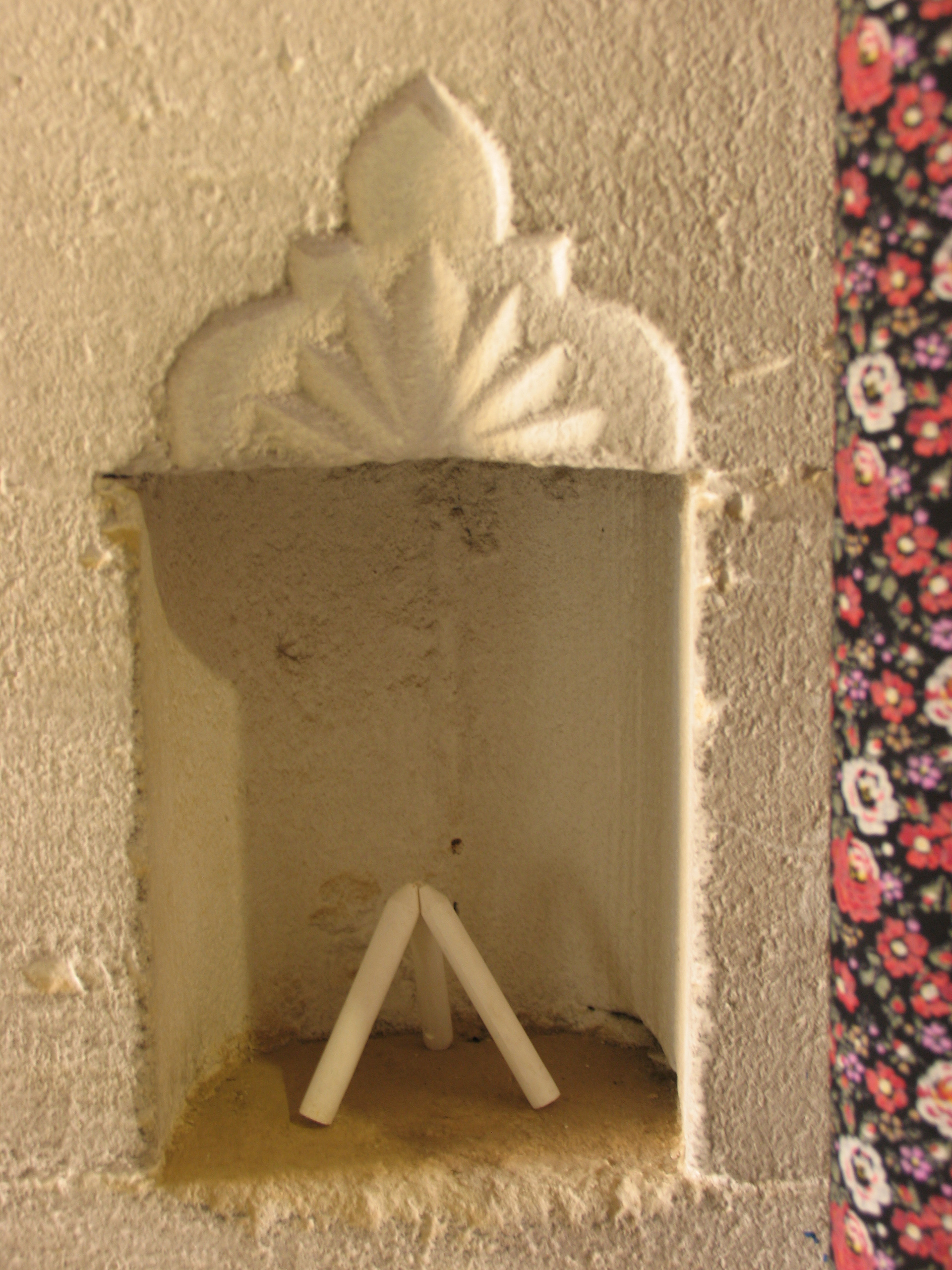
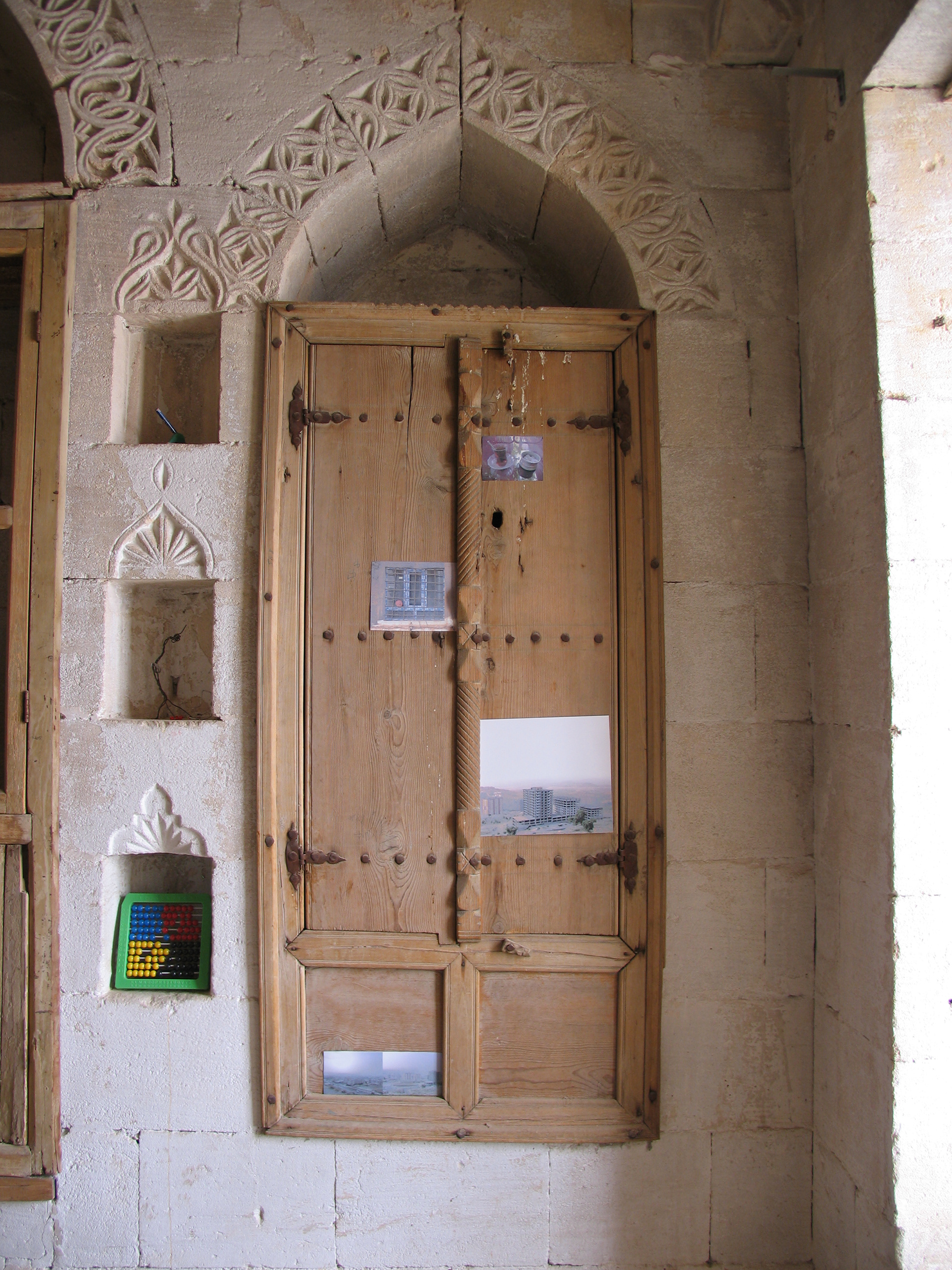

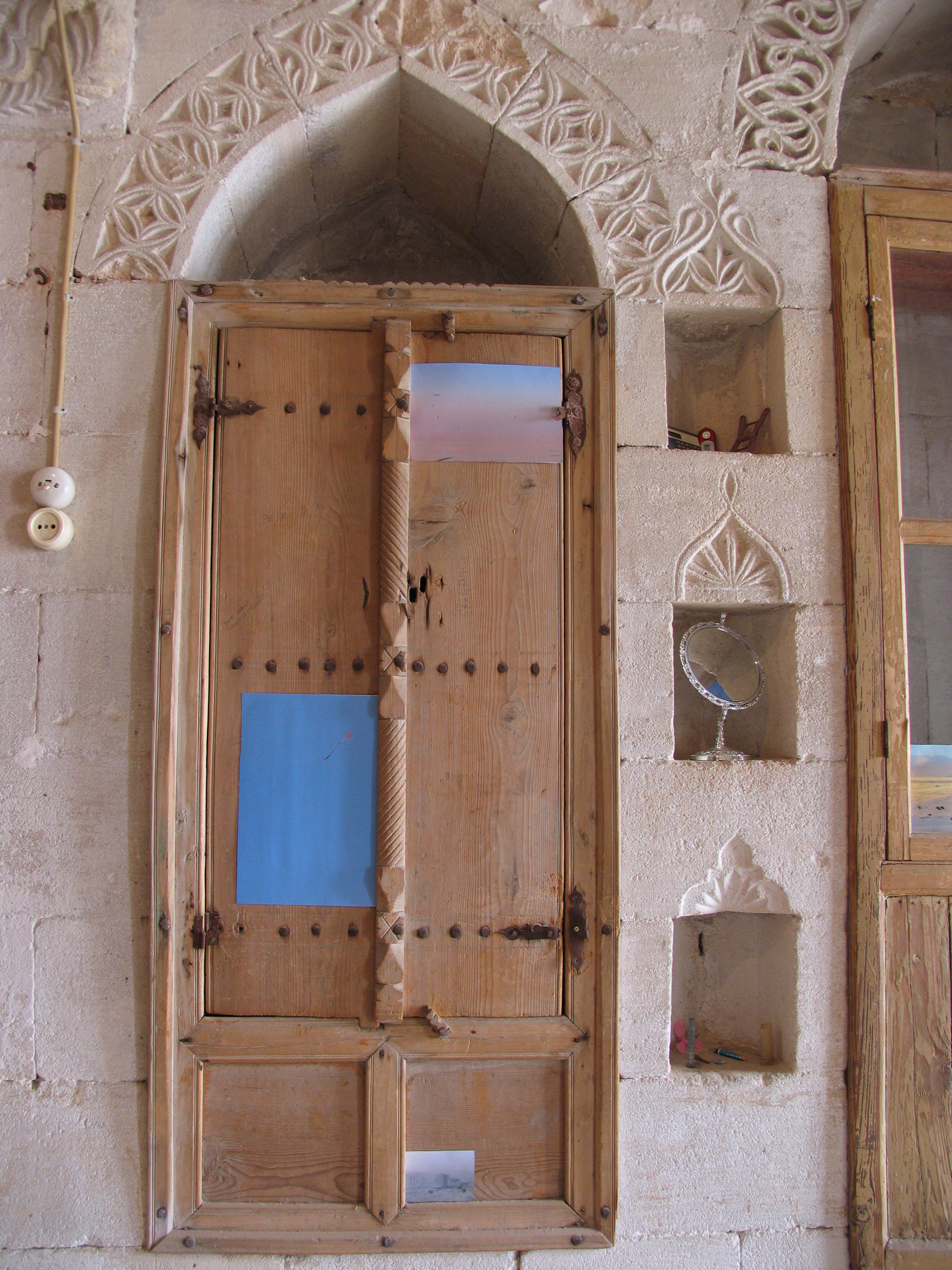
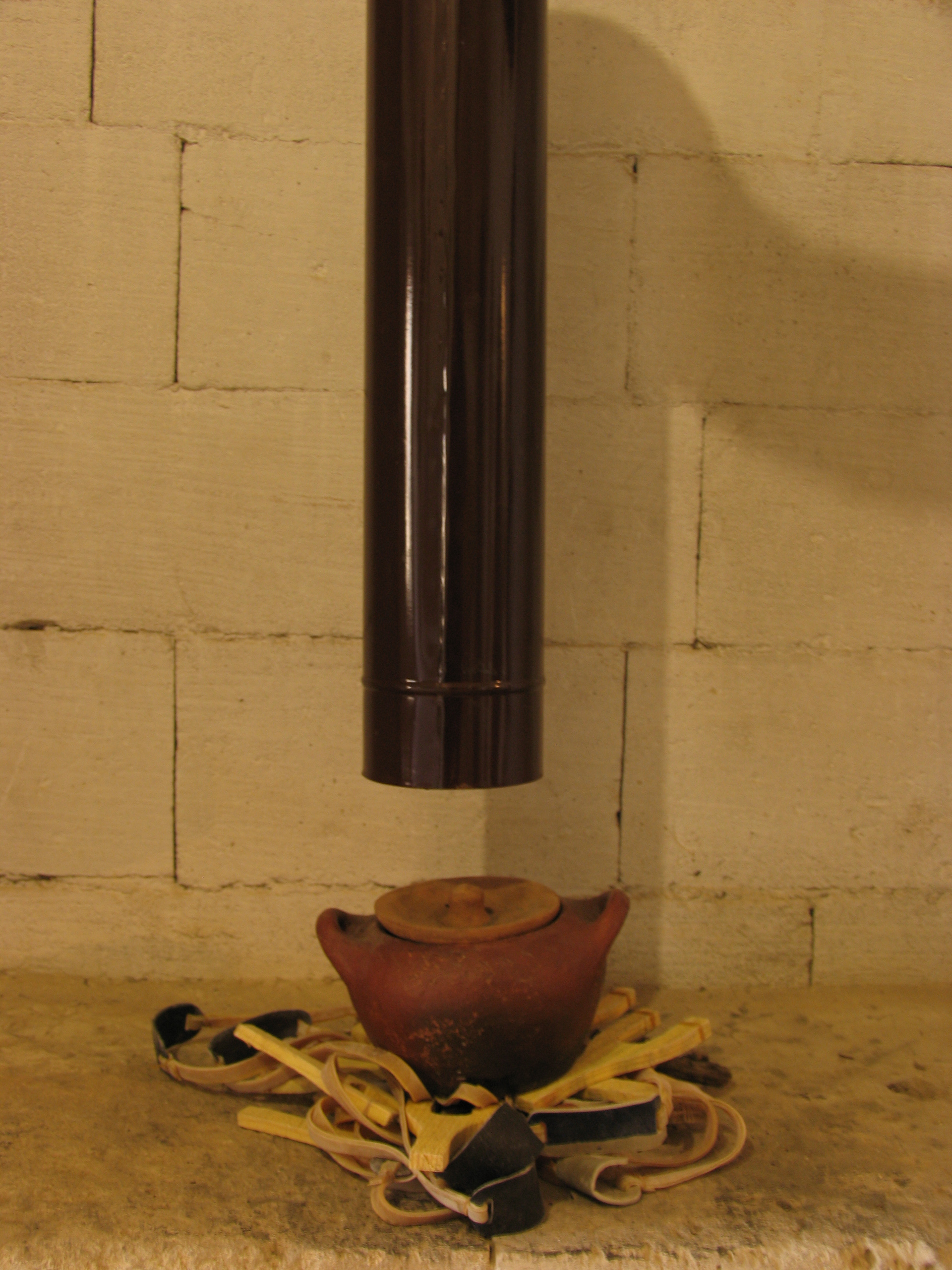
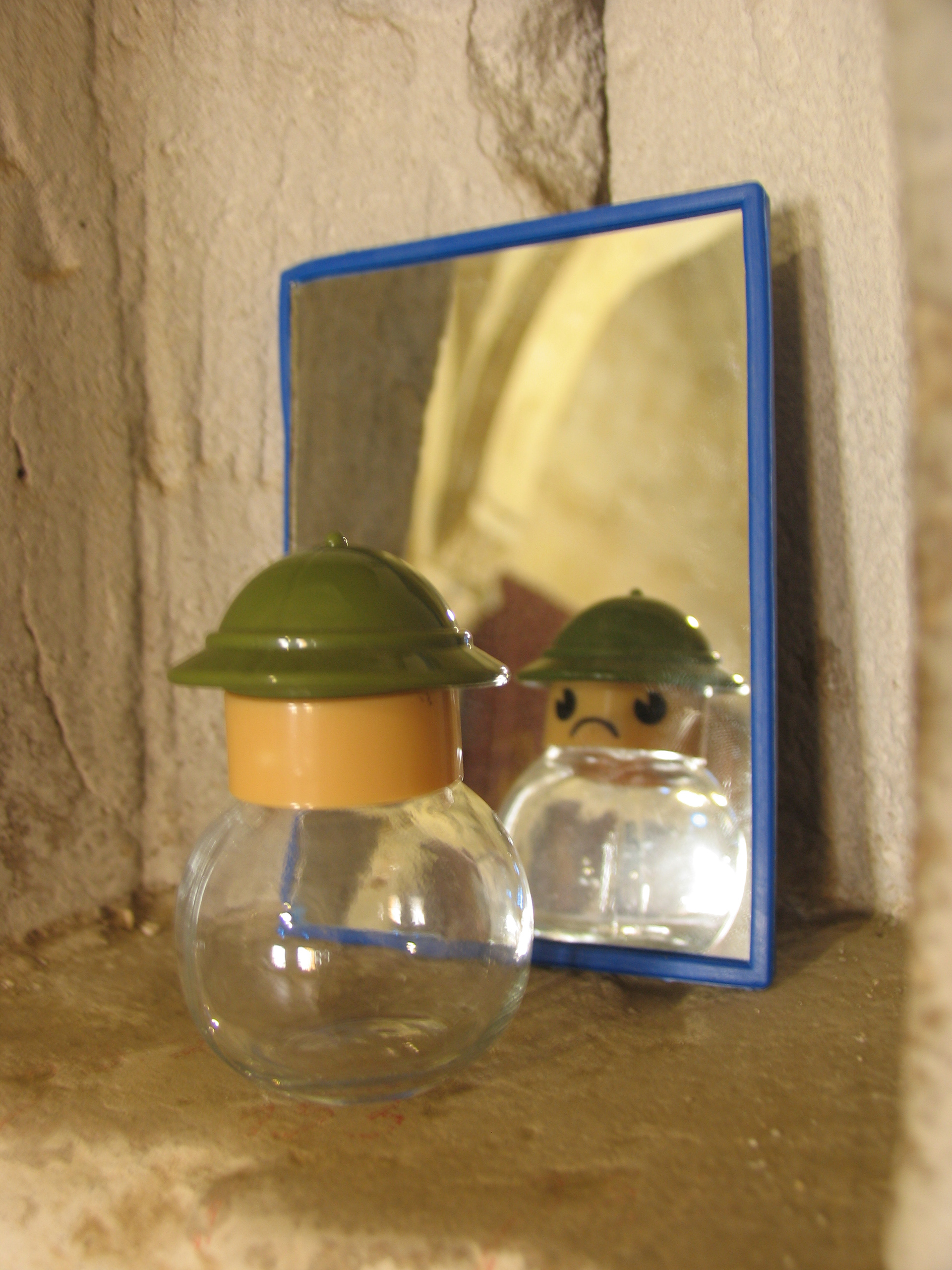

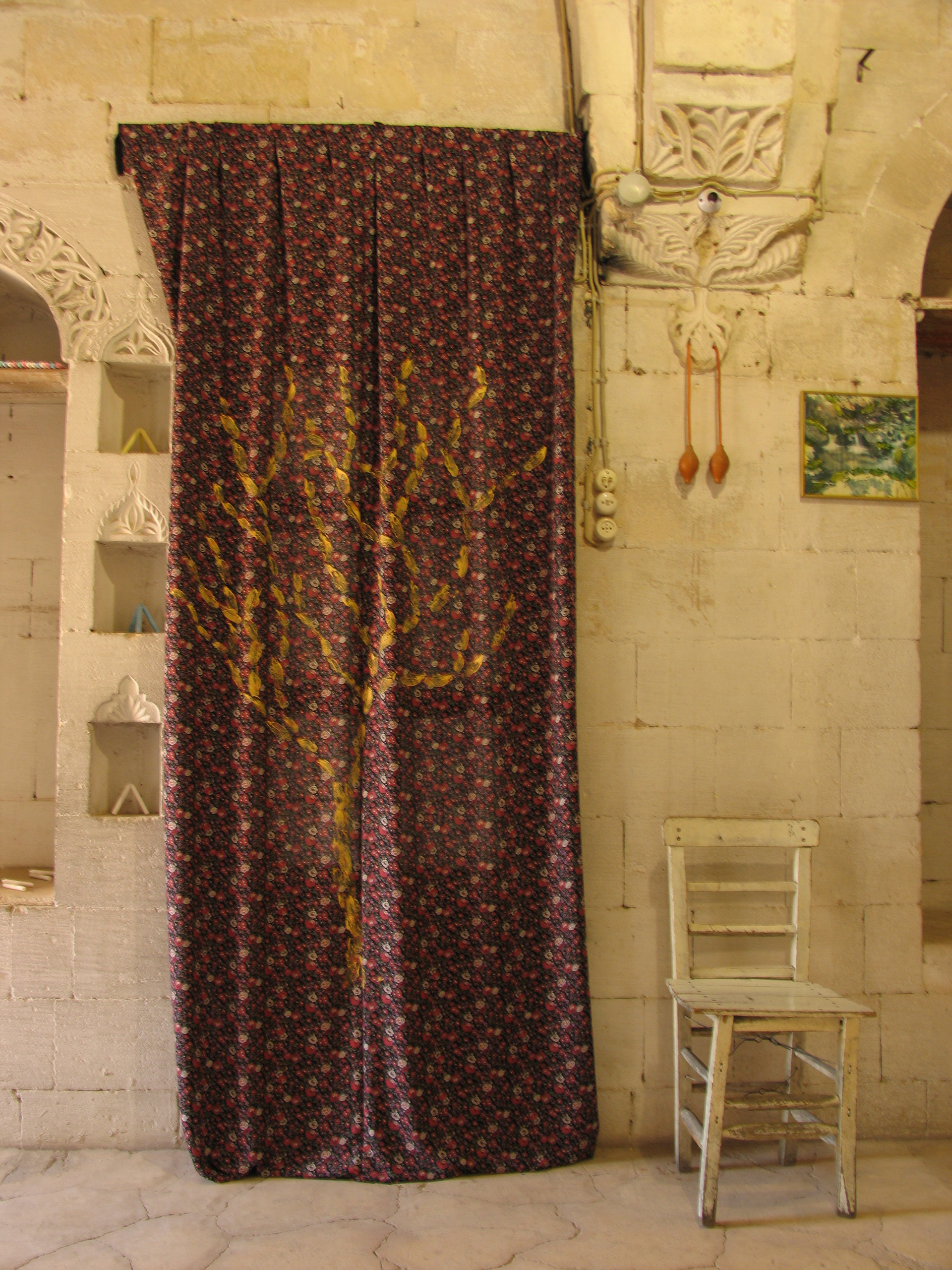
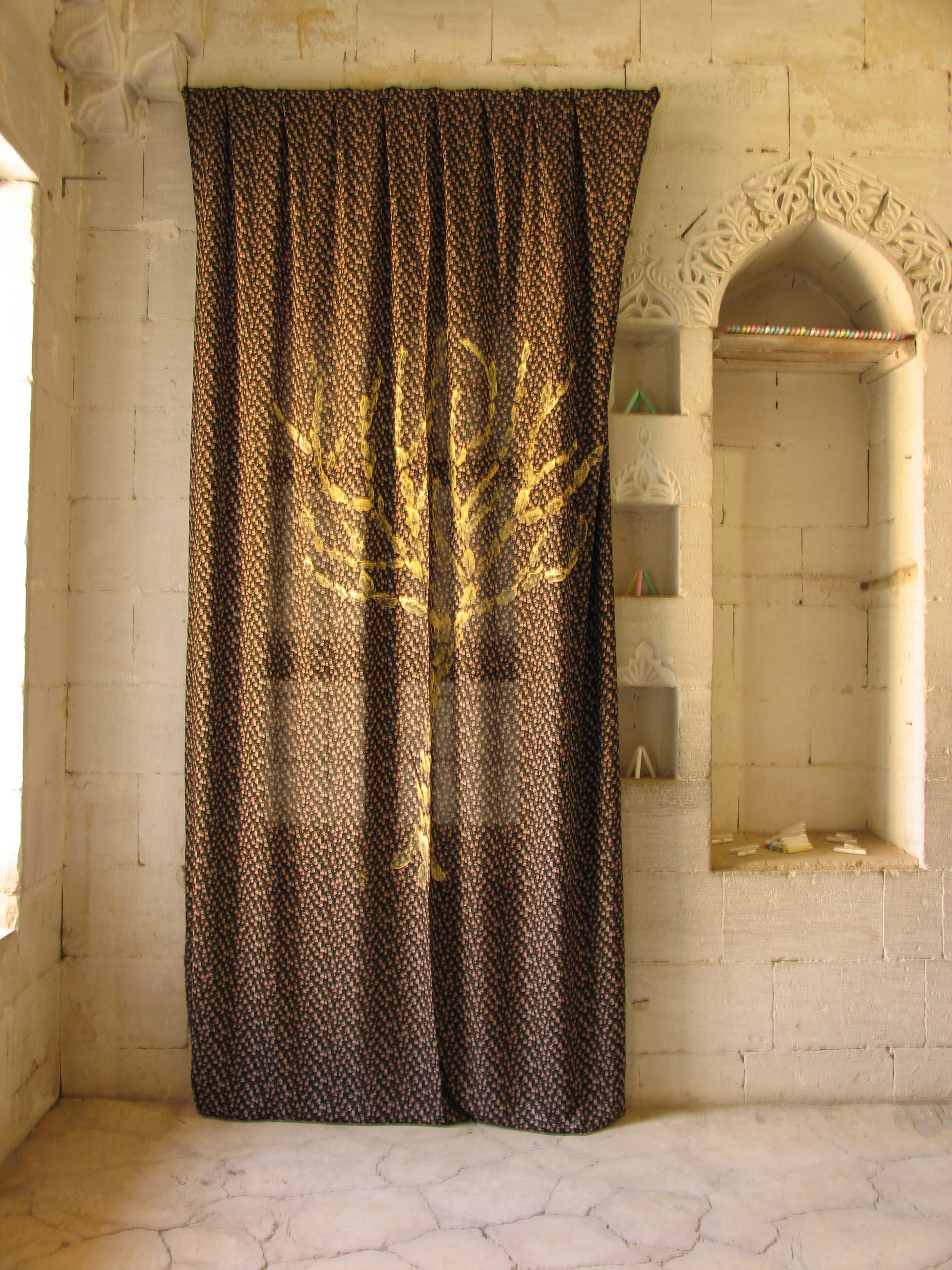
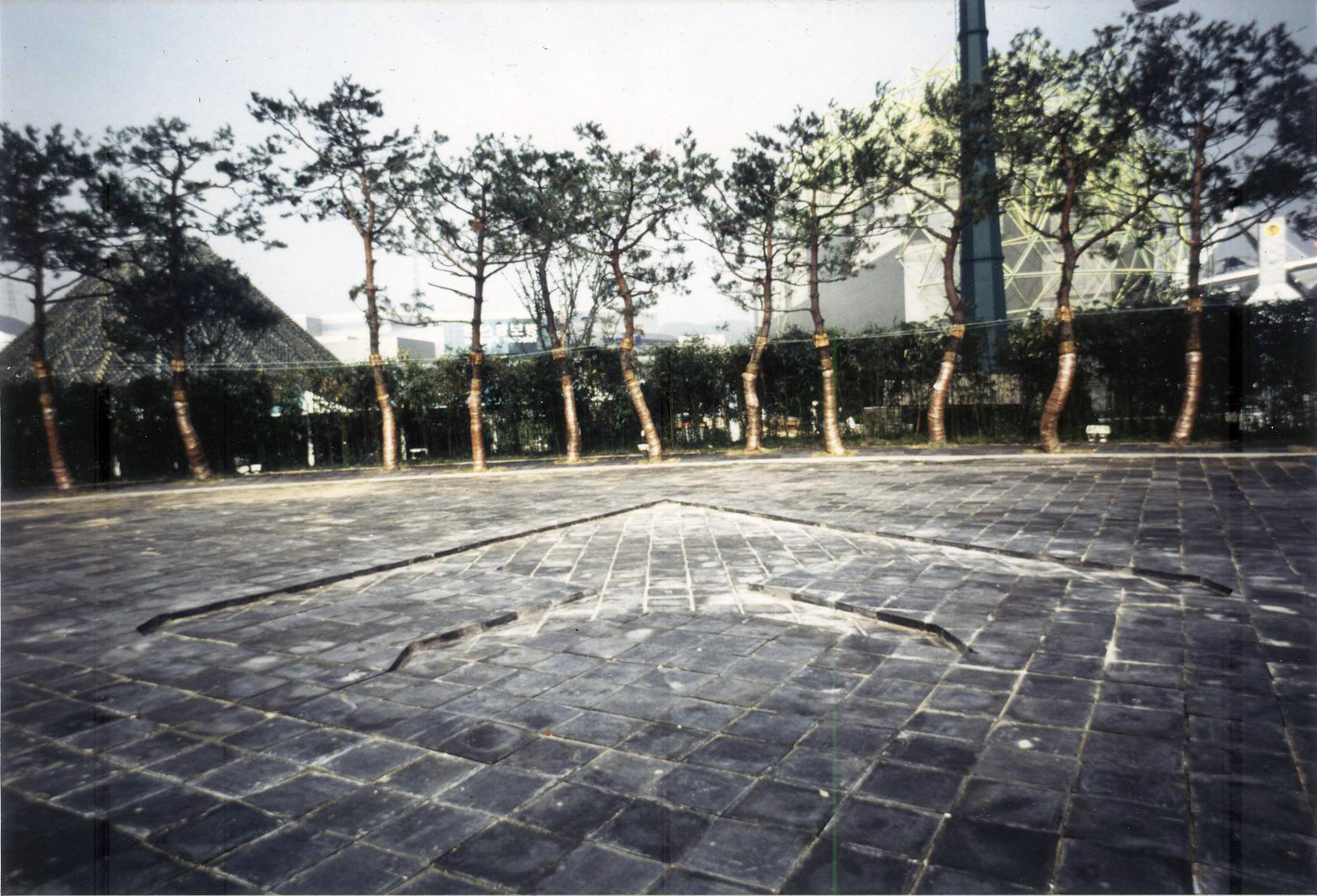
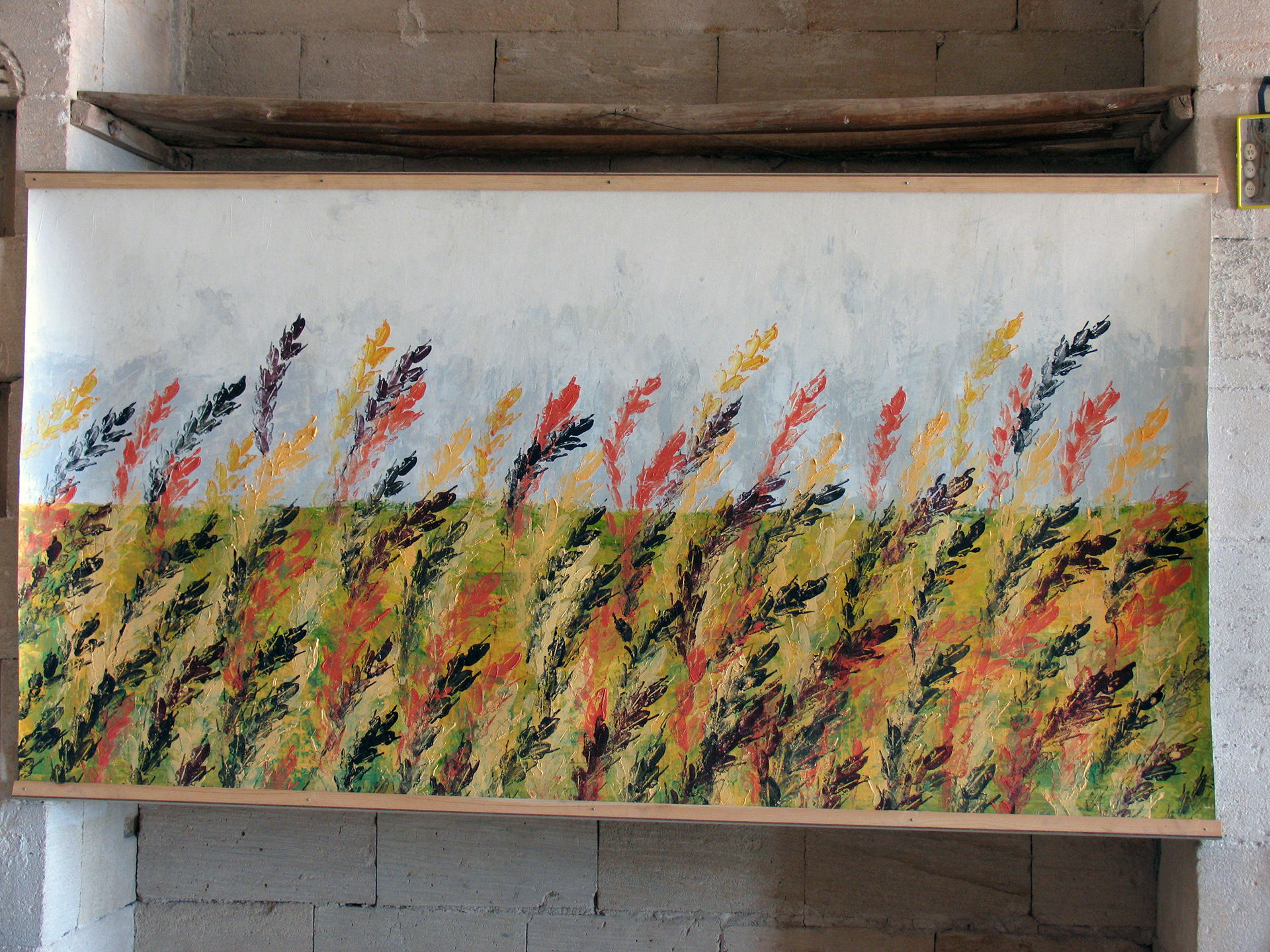

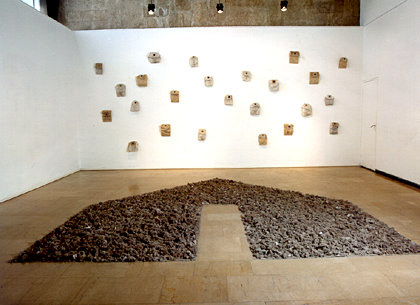

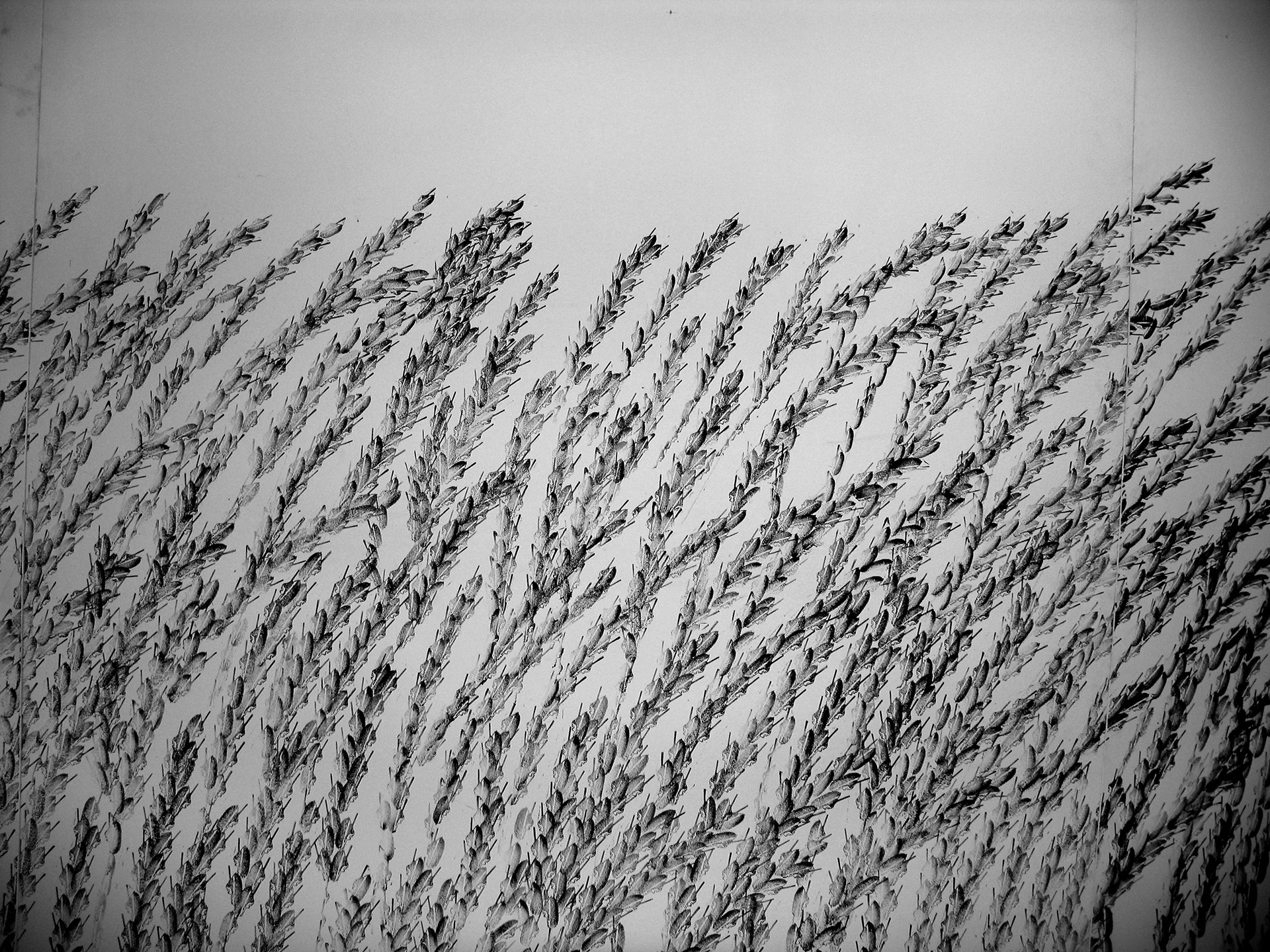
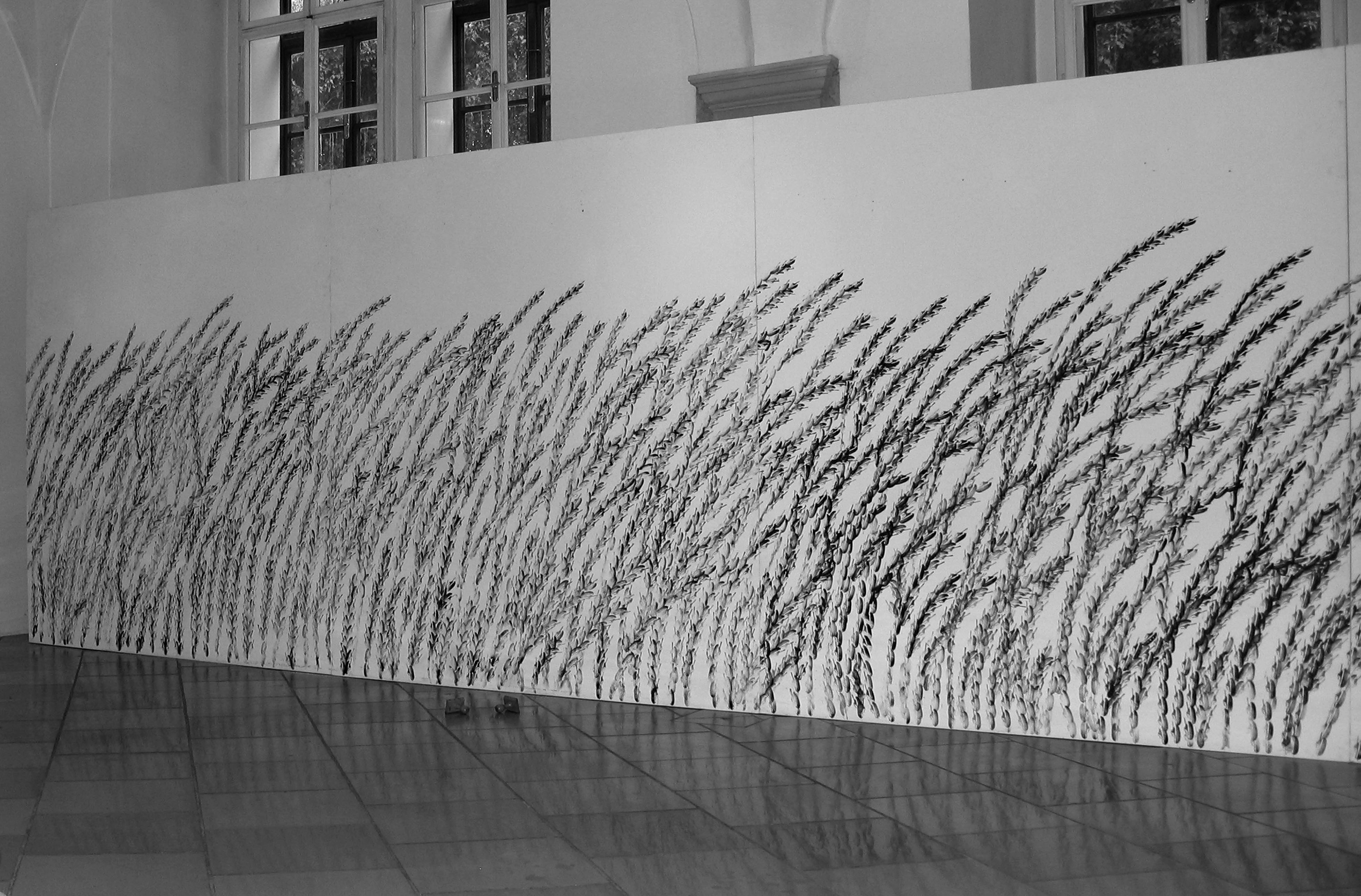
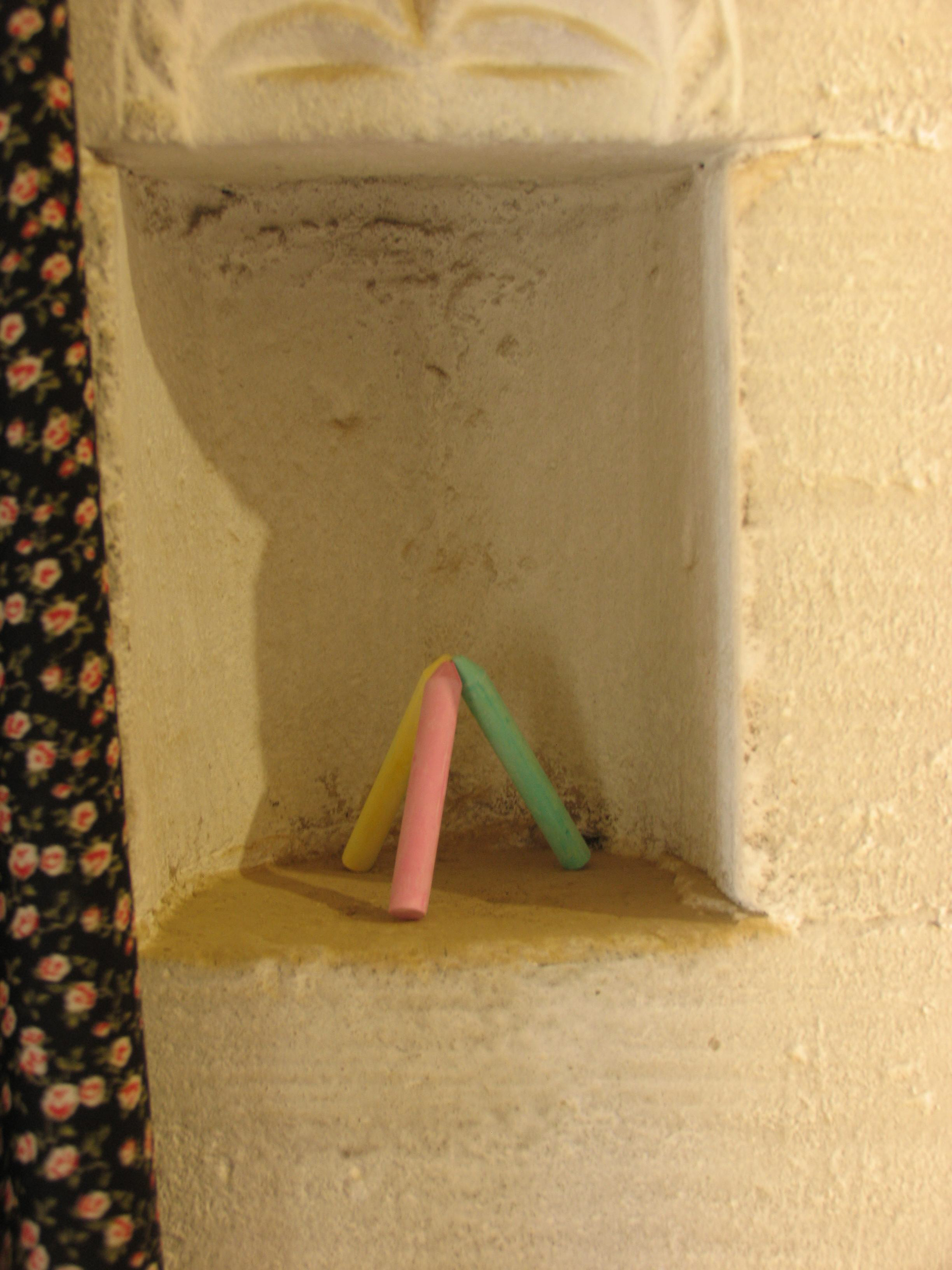


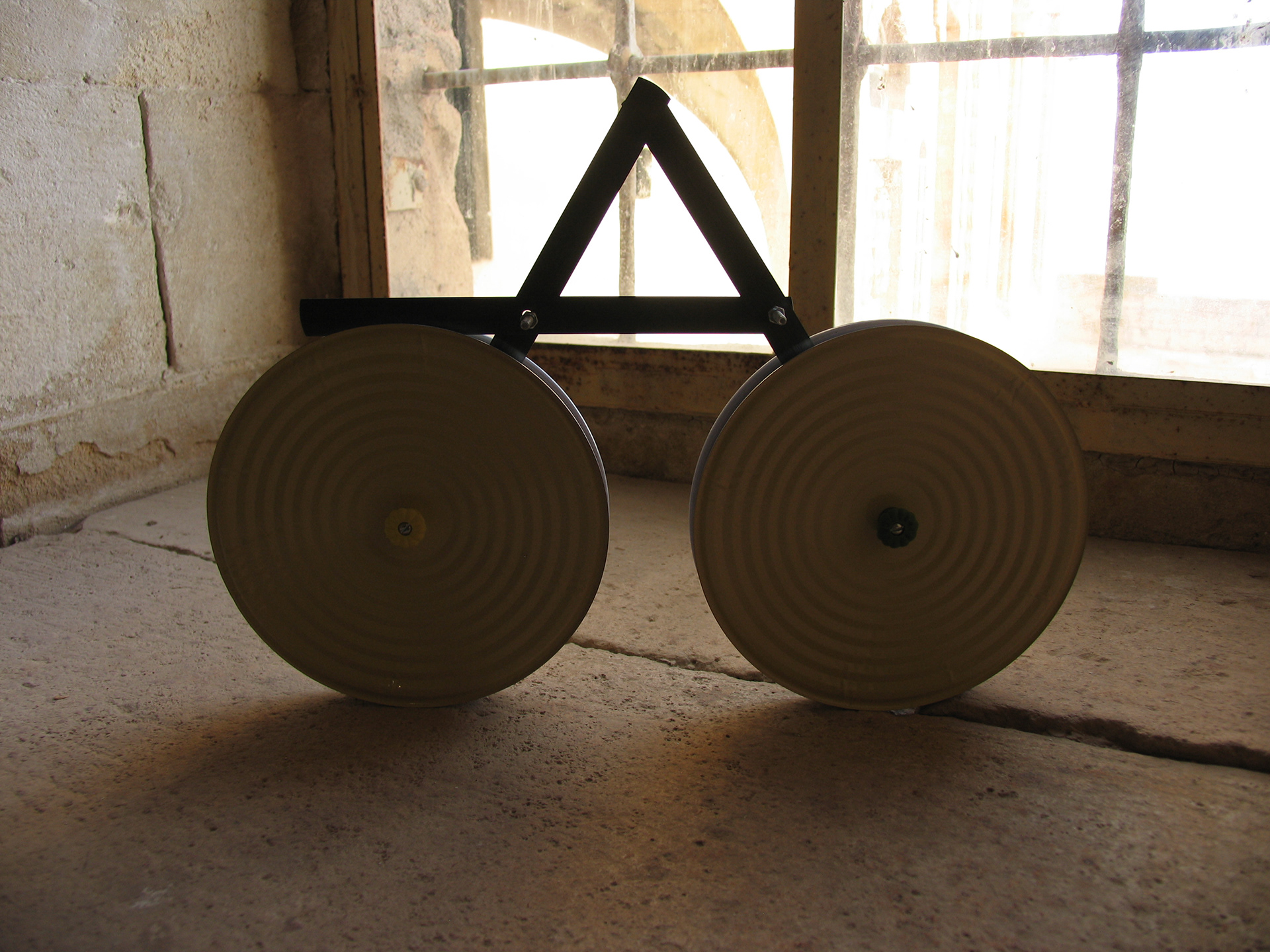
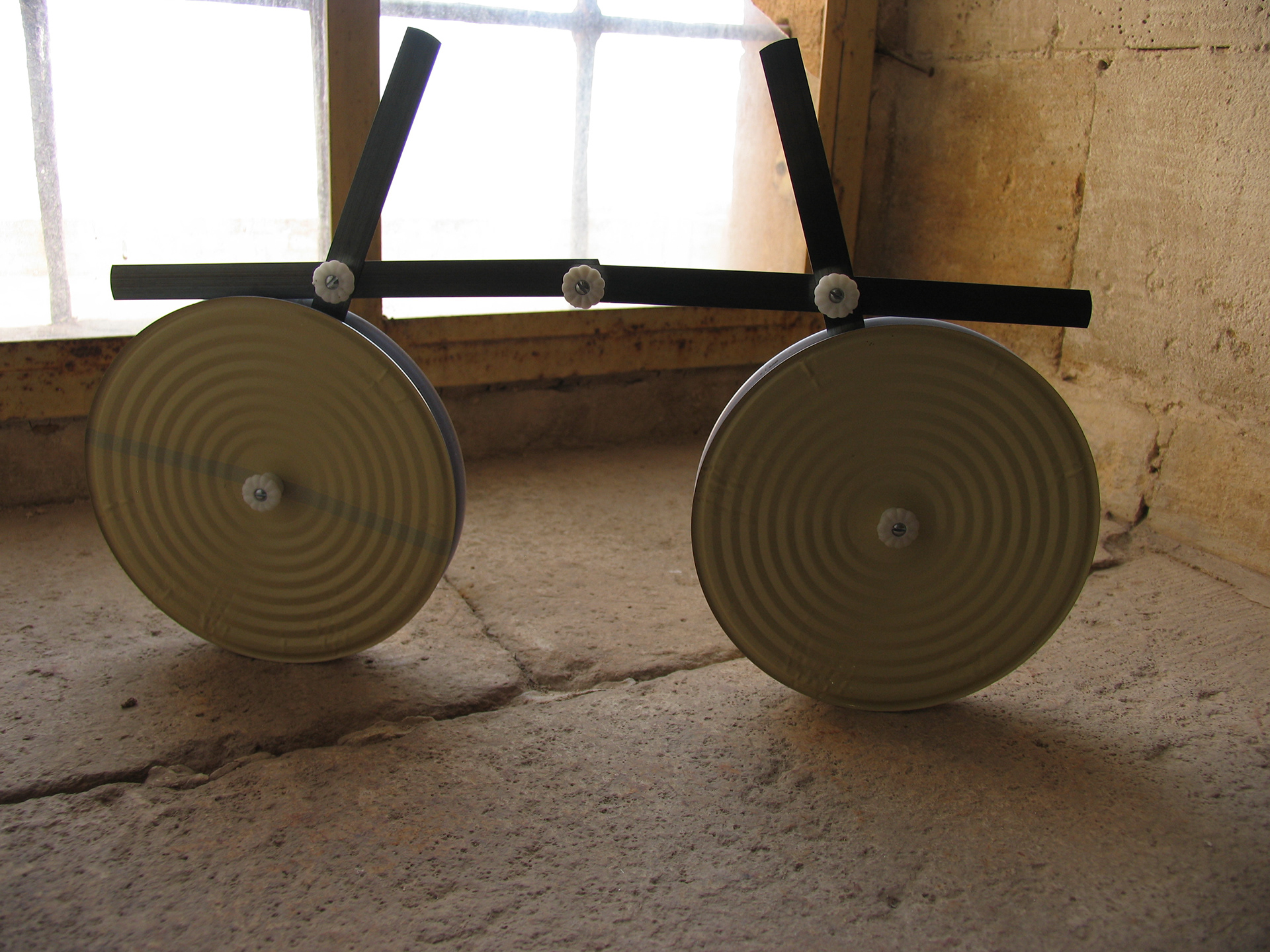
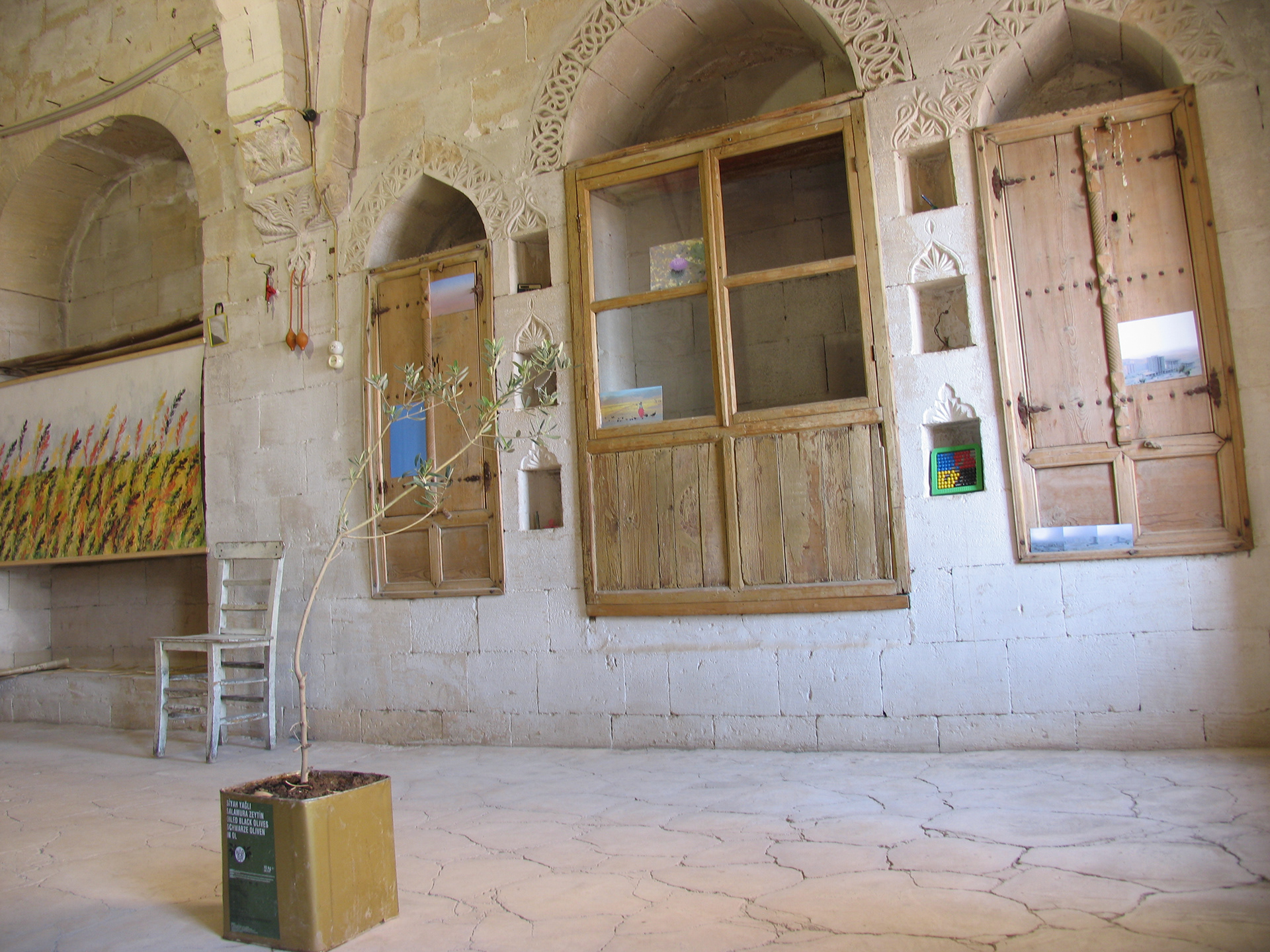

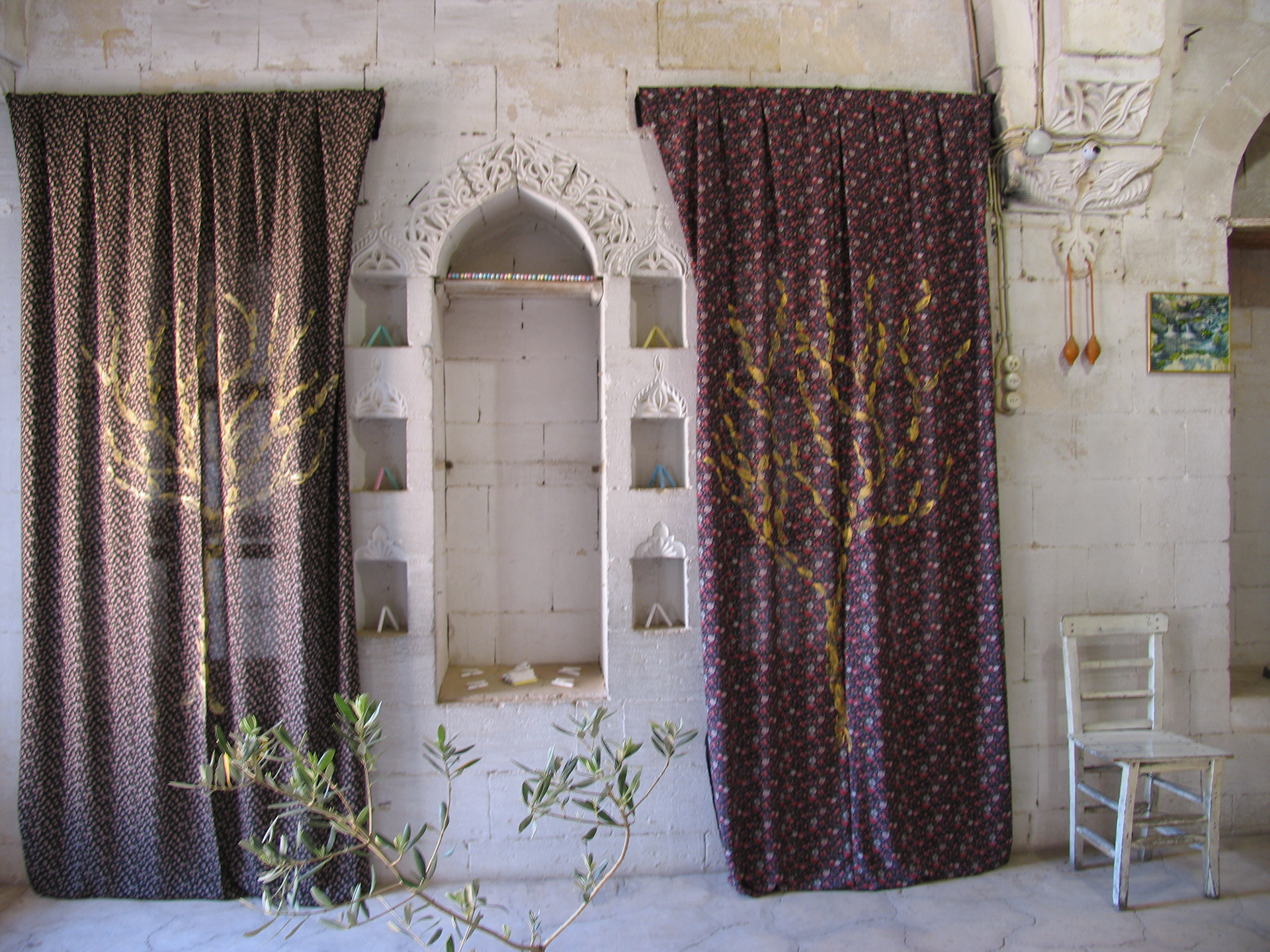
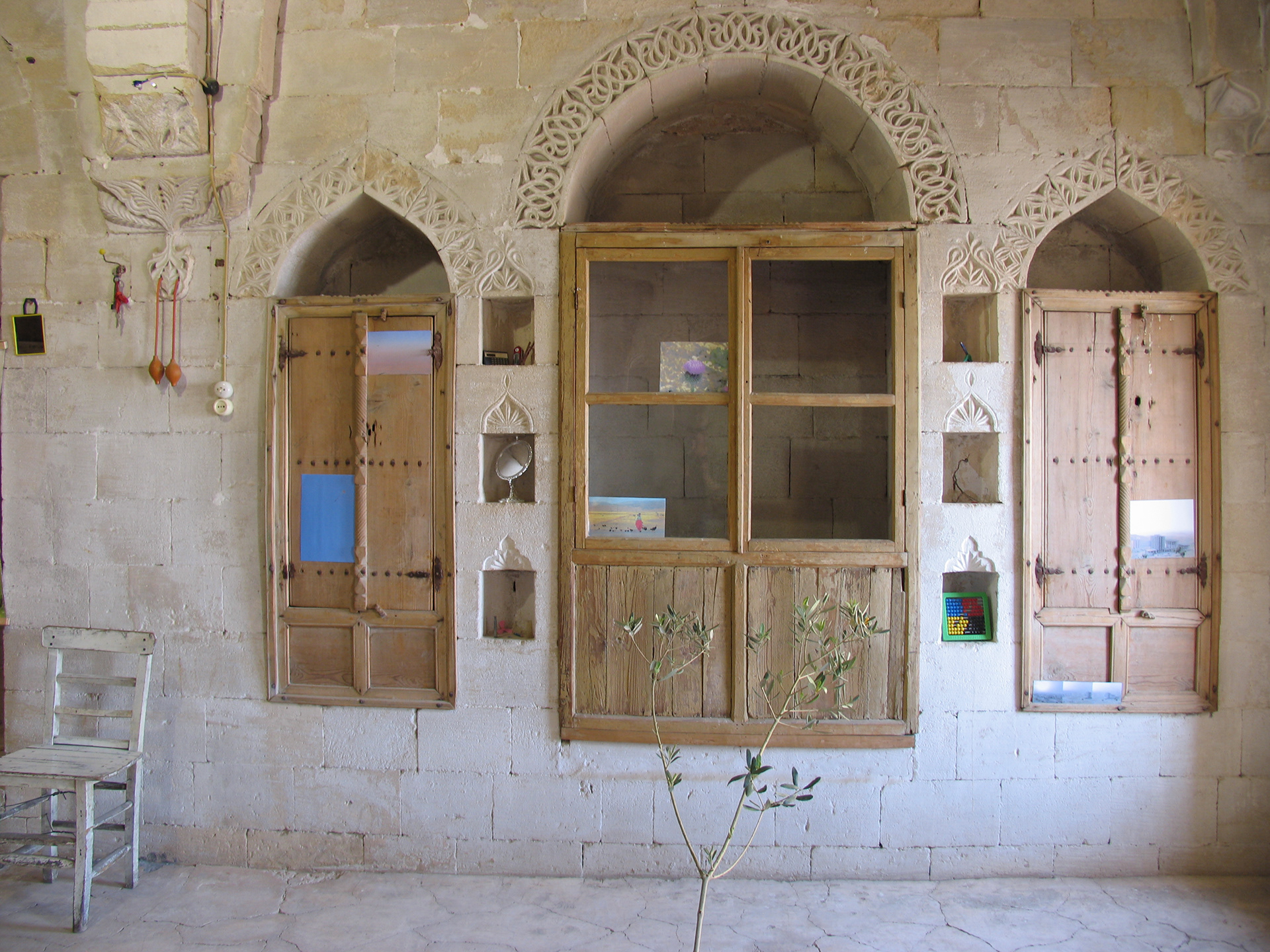
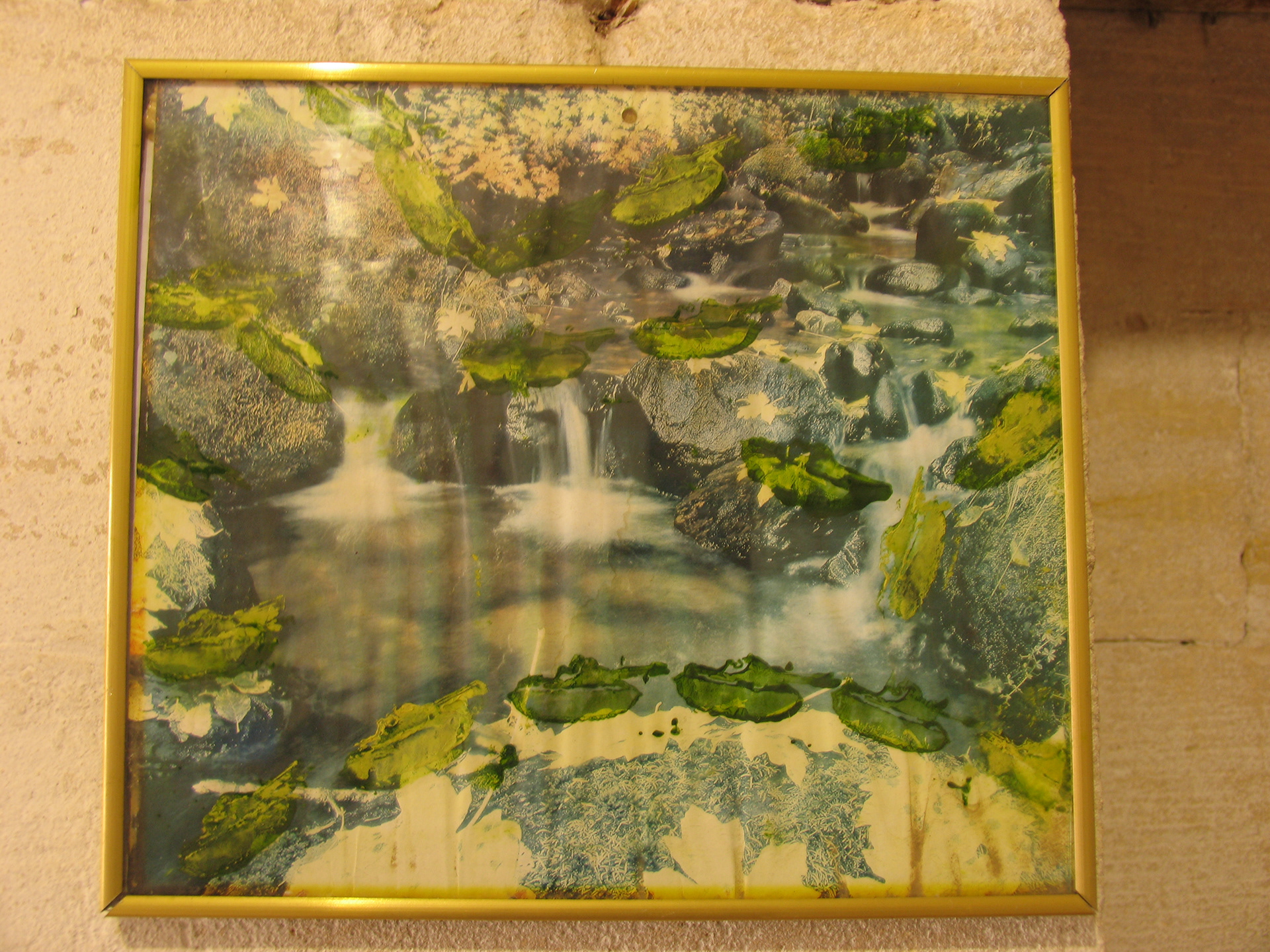
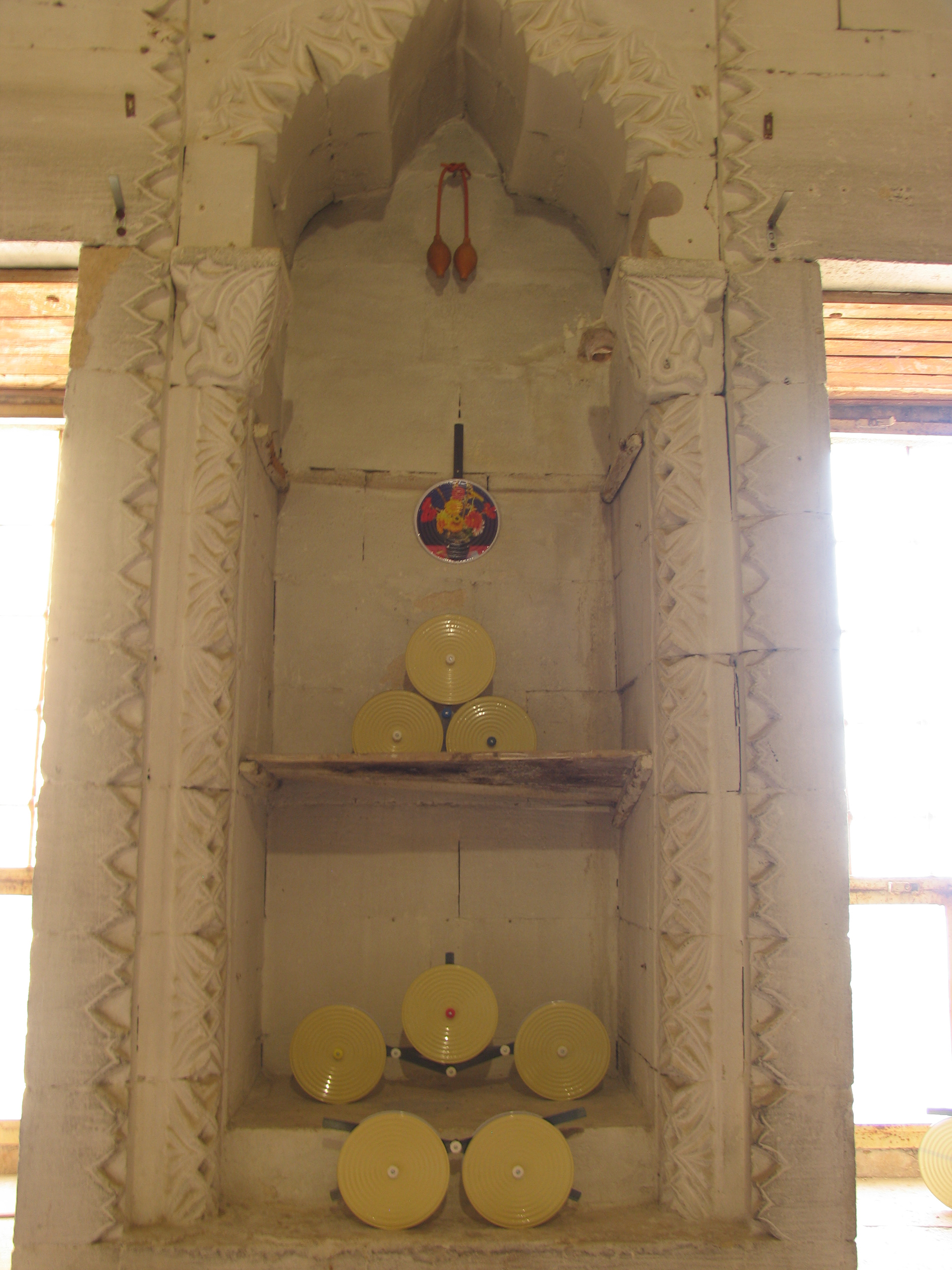
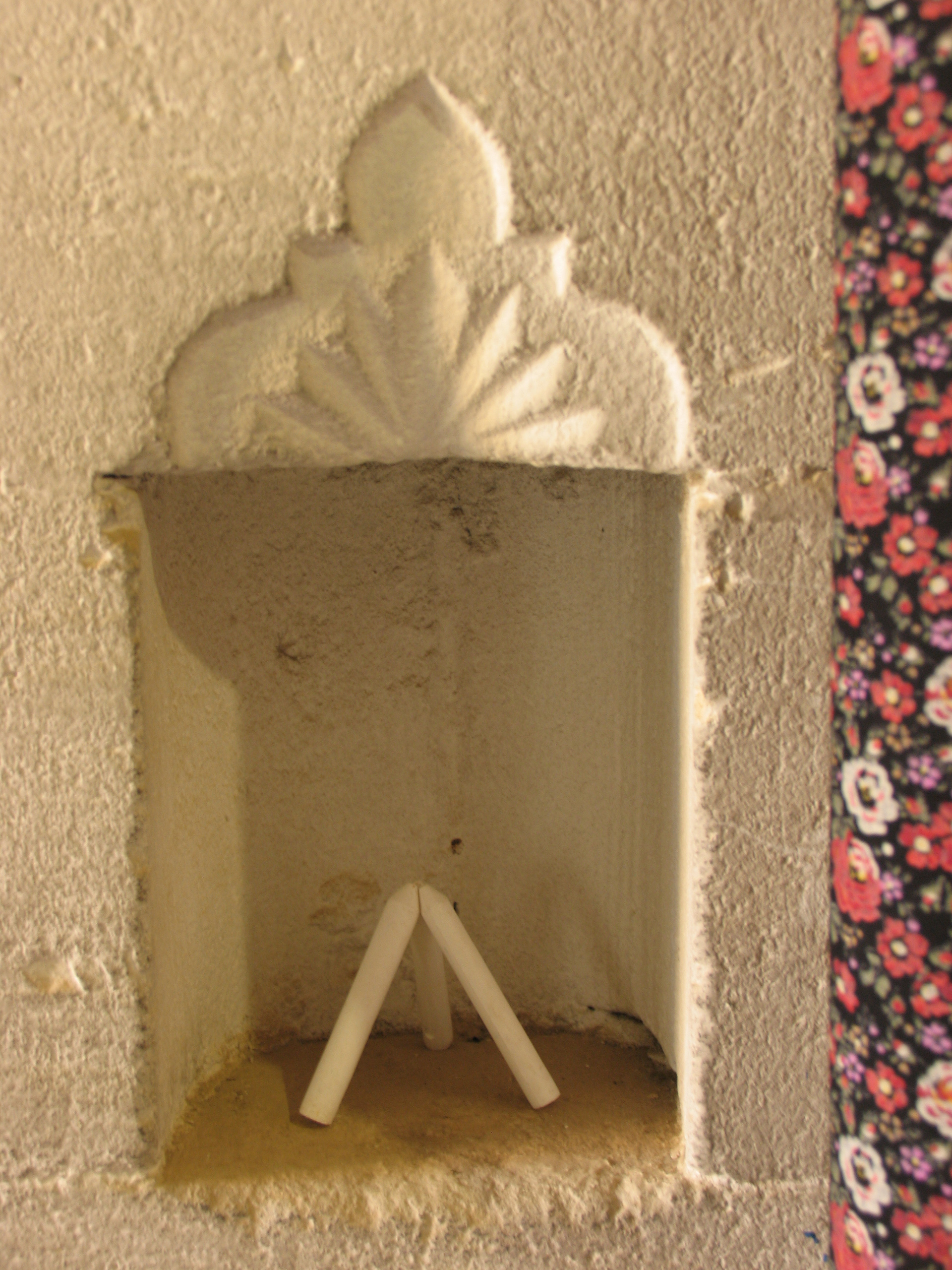
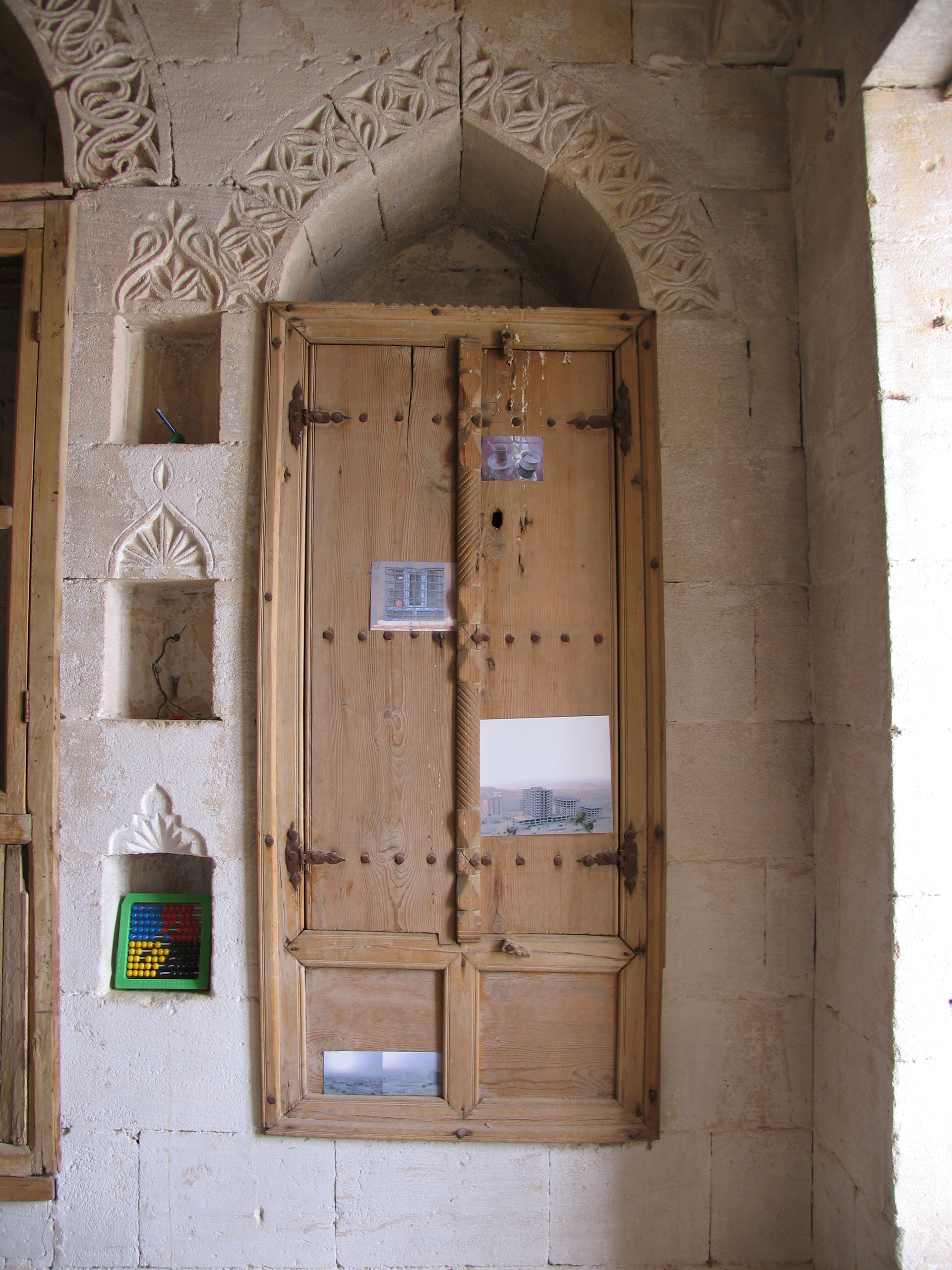
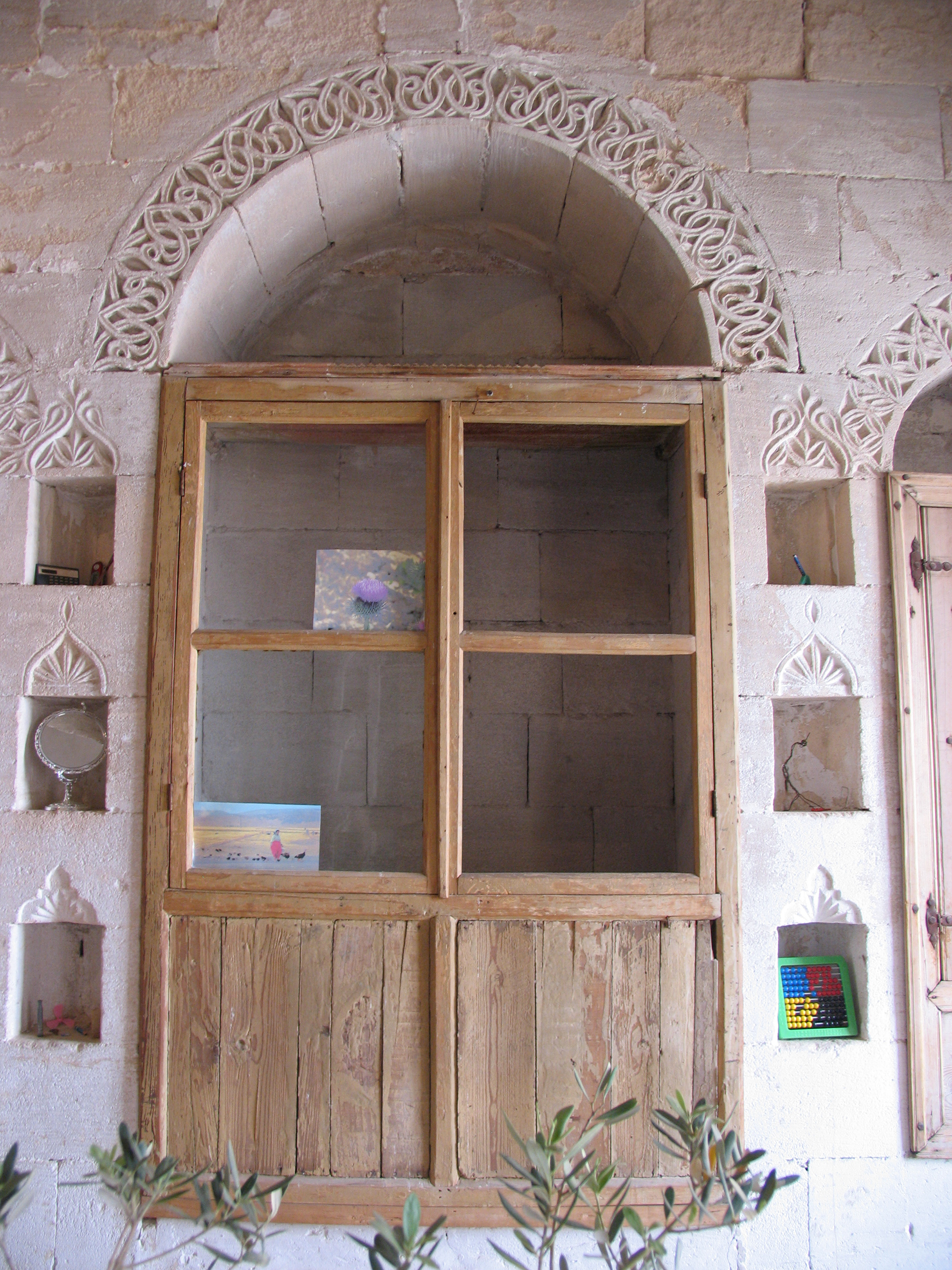
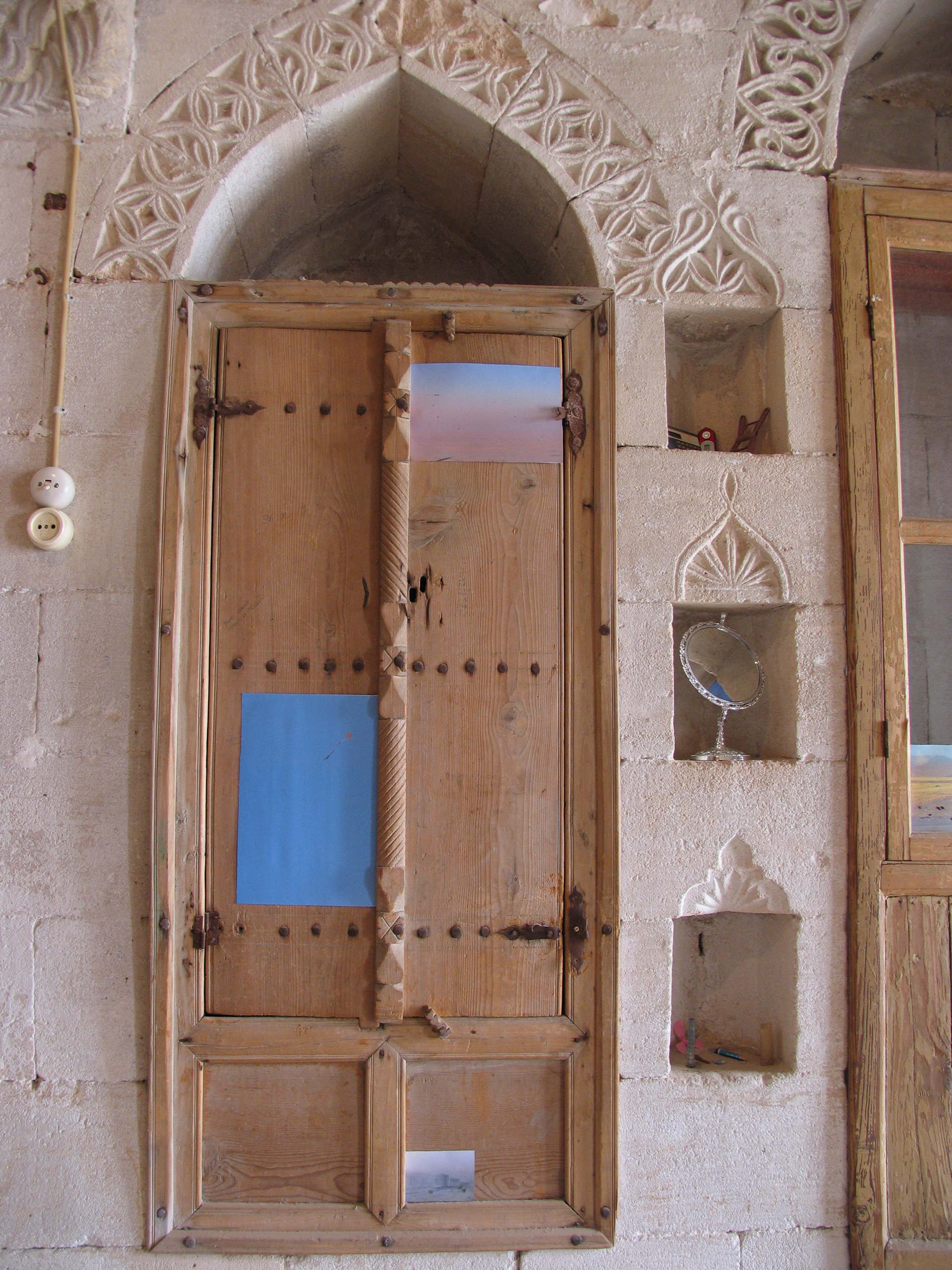
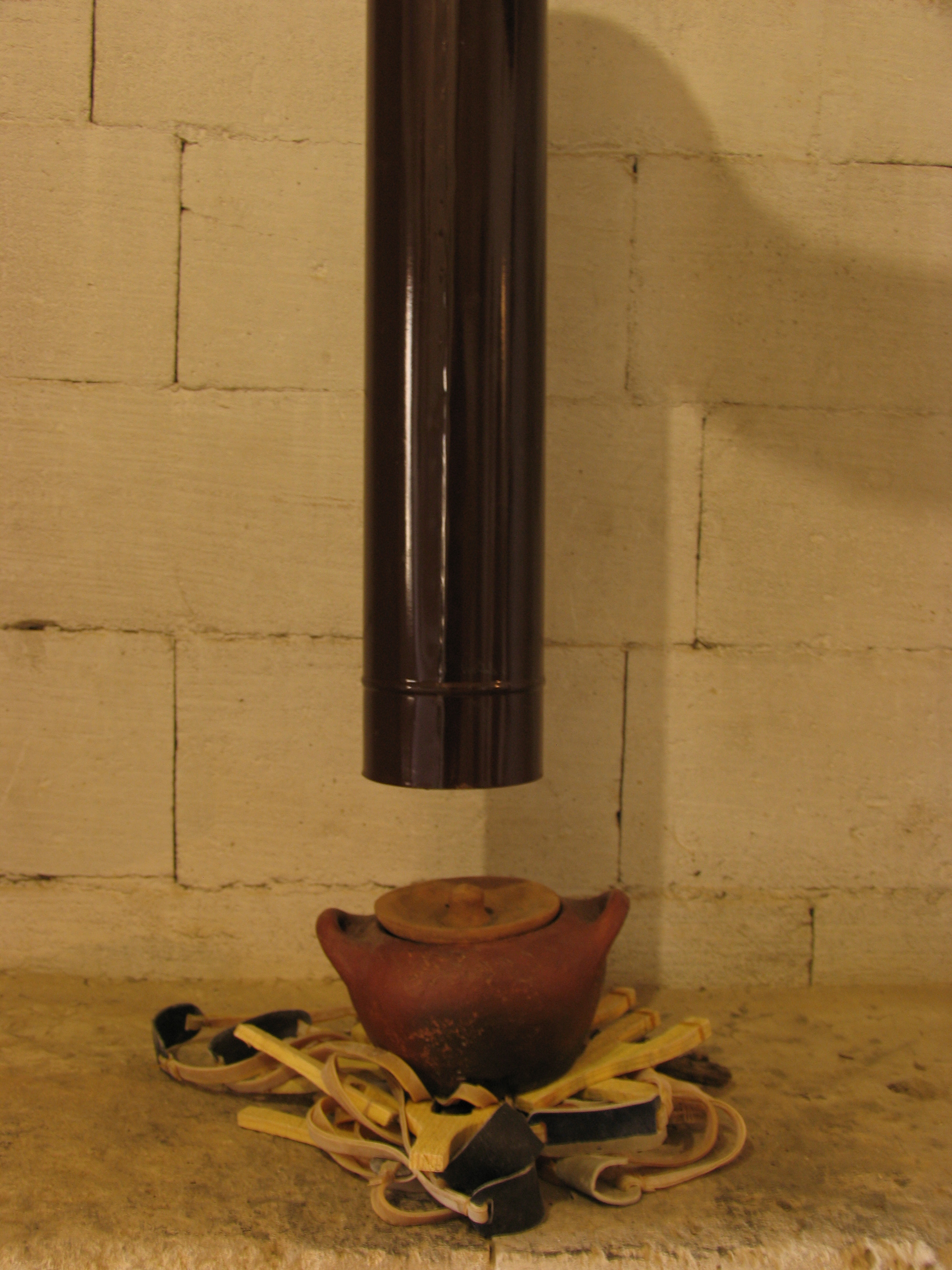

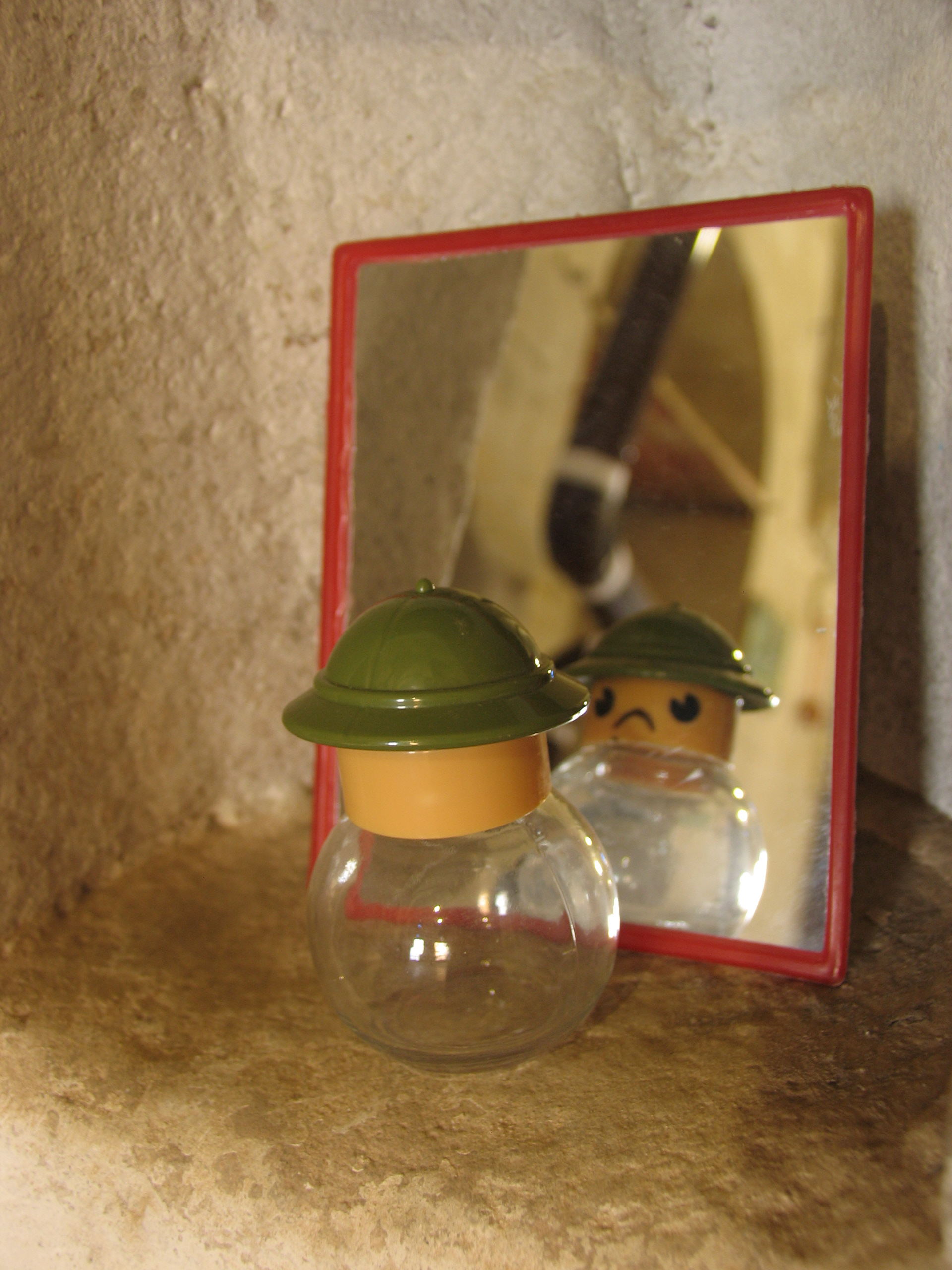
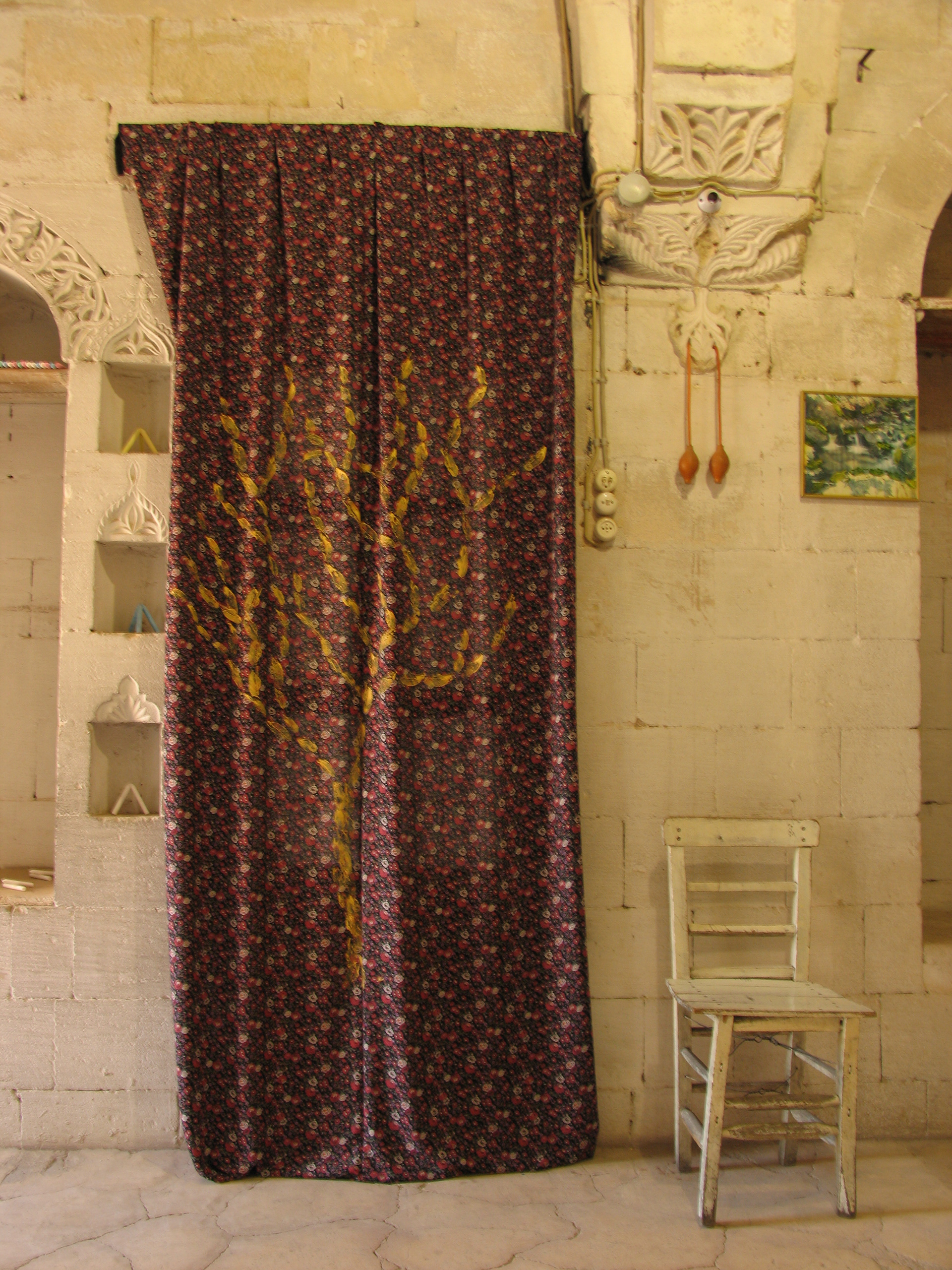

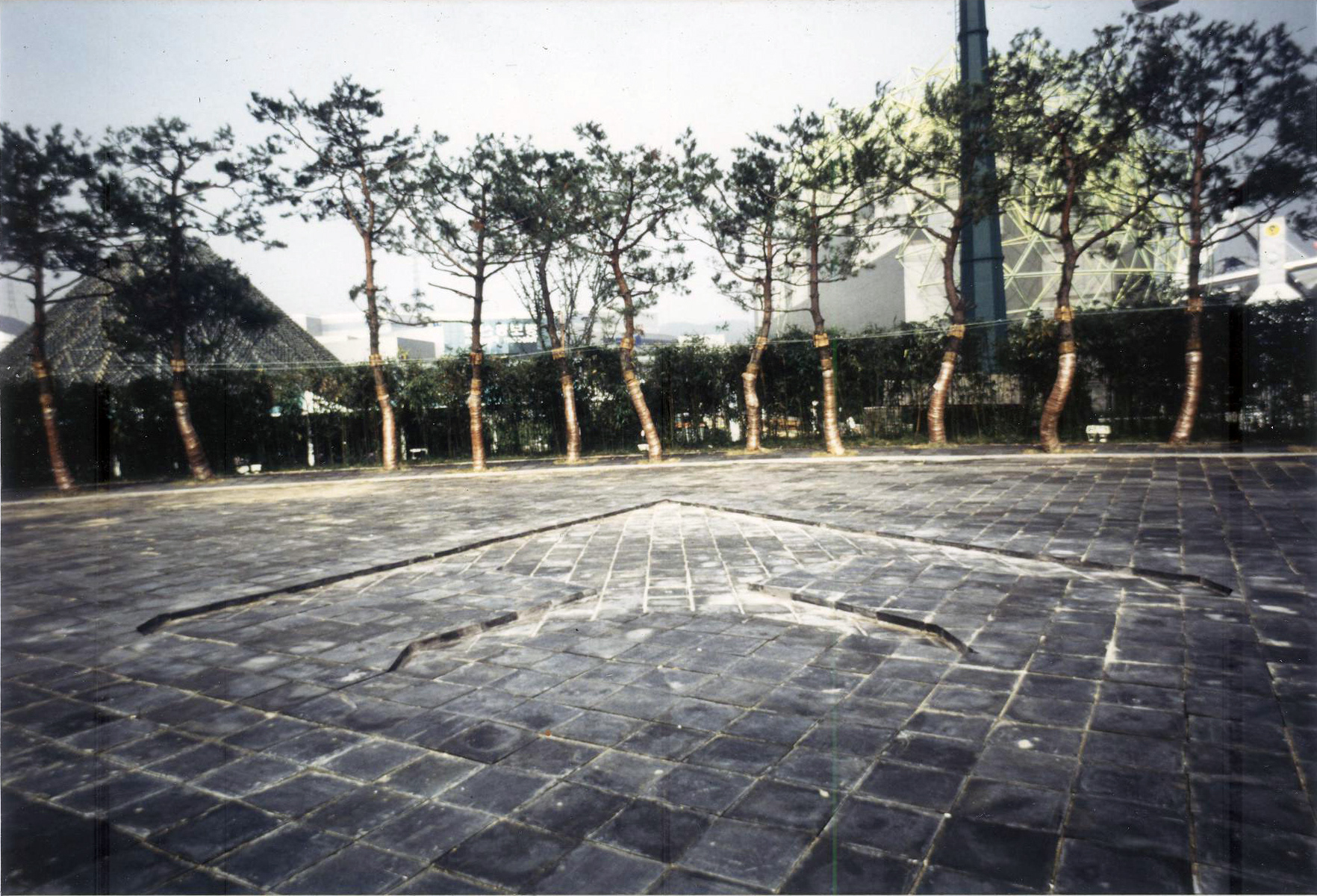
"Cabinet de Dessin" 2004,
"Cabinet de Jeux" (Playing at Home, Getting up to the Blackboard) 2004,
"Karaköy Cabinet" 2007-2008,
"Table of Collected Memories" - Aley 2008.
Something happened to me.
But today when I look back, I see this as a gift. At the beginning of summer, 2003, my right achilles tendon tore and for almost 4 months my foot was in a cast and I had to use crutches. I spent a lot of time at home, in my drawing room. That became a room for working on drawings. I began to look out from there. This is a 'Cabinet'. The time I spent there gave me an opportunity to bring together my works. The exhibit "Ghost Line" that I was invited to at that time took me someplace I had been wanting to go for some time. The work, to think about the process of work and make this visual was something I had done continually between 1980 and 2004. I still make a drawing nearly every day, sometimes for fun, sometimes as sketches for a project, sometimes just to make marks on paper. Pencil, ink, paint and other techniques and experiments. I call these small actions. But it is these small actions that stand in front of me as the foundation for a large piece.
The work which I call "Cabinet de Dessin" became a work in which I brought drawings from different periods together and shed light on my own past. (Kabinet de Dessins fotograflari)
I had done a similar thing in a less self-conscious way at the Siyah Beyaz Gallery in Ankara in a work entitled "Work Room". Similarly, the "World of Objects" exhibit at the Galeri Apel in 2002 pointed to this idea.
As artists who don't have studios, my wife and I have made a part of our house into a CABINET where most of the projects and works that I realize began to emerge.
The work room, the Cabinet, is a place where everything can begin and end, a room with four walls that emerges in many of my works), the sign of the house that I Send into the void, that I turn over in my mind until lose Is dimensions, where I spend myself, where I can have emotions like reflect my inner world externally. This area Sometimes becomes a play area and when the work is laken into the exhibit space the visitor is invited to play.
For example, in "Playing at Home - Getting up to the blackboard", visitors played with chalk for 6 months, wrote, drew, and gave the work life. The works became interactive with the participation of visitors.
At "Karaköy Cabinet" during 2007-8, at the BM Suma "Open Artist Studios" exhibition, I turned one of the rooms of the exhibition into a work and discussion space throughout the duration of the exhibition. I took part of my Cabinet at home there. Almost every day I went to "Karaköy Cabinet" and wandered around the neighbor-hood, collected materials, worked, created works and prepared myself for chats with potential visitors. Living in a room and opening my work process to visitors at "Karaköy Cabinet was like a performance for me. But I should make it clear: very few visitors came during the period I was in the room and when they saw me there, they looked at the works from the doorway, or even turned away without looking. They may have thought it was the room of an advisor or a secretary. Perhaps my presence was uncom-fortable, and they didn't enter in order to not disturb an excessively homey and private space. Perhaps this kind of situation was very foreign for visitors who didn't know what they came expecting to see, what they would find.
That is of course the salt and pepper of meeting with art and with the artist. Did nobody come? They did, mostly acquaintances, we warmed our hands by the radiators and chatted about art, listened to music, drank coffee and tea, and ate. (kabine Karaköy)
While working in a garden in Aley, Lebanon, I thought of it as an open-air cabinet or a cabinet without a roof.
My reading of Viktor Mazin's "Kabinet an Anthology" in summer 2002 proved a turning point for me.
Cabinet of Game, to play at Home — to pass on to the black board, 2004
Cabinet of Drawing, 2004
Kabinet
Kabinet is a place of work. Investigations, studies and laboratory experiments can be carried out here. The idea of "Kabinet" will be determined through Work.
Kabinet is a secret place for spending time, no matter how that time is spent. The comfort created by this place induces thought toward the pleasures of hard mental labor. The relaxed body determines the idea of "kabinet" through Rest.
Kabinet serves as an appointed place for particular conversations. The relaxed body might find itself in the pose of an object lost in reminiscing. Linguistic exchange with the supposed proprietor of the study and the articulation of thoughts are the result of the disposition of bodies amidst the study's furniture. These determine the idea of "kabinet" in language and through Language.
Kabinet brings together a complex body- the editorial office: an environment of collective solitude and individual separation is formed. The peculiarity of this body is constituted by both its constituted by both its genetically human heterogeneous homogeneity and in its topographical belonging to an office occupied by a particular mission.
This, in its turn, also determines "kabinet" through a complex Body. The editorial Kabinet receives (itself as) patients. Material and non-material objects coming into the line of sight, the range of hearing and the field of dreams (thus) act as the patients. The transference of these objects to the recipient is accomplished by injecting a text into him.
Consequently, it is not only the processes under examination that can -and will- appear in the role of patients, but readers and viewers who transmit and receive their own communiqués. Thus, on the one hand, Kabinet contains transmissible tracts of text; on the other, the perceiving subjects of the Text.
Kabinet, therefore, becomes a place demonstrating the objects and subjects of study, a place of meeting with an overabundance of various processes, various rarities. A place comprised of a thousand little compartments in which not only the visitor's symbolic sphere is impregnat-ed, but his phantasmic imaginary sphere as well. In this instance the idea of "kabinet" is self-determined through the Collection of intellectual fetishes.
Within its limits Kabinet is arrayed in multi-textured surfaces half-opened to bookshelves, on tables piled with instruments, gadgets, artifacts and screens that send and receive, pass on and delay signals. In this sense Kabinet serves as a visible and invisible, a hard and supple barrier between a supposed outer and inner, i.e. it is viewed as a Membrane.
For Kabinet: Viktor Mazin
Kabinet an Anthology
The publication of this anthology was timed to coincide with the exhibition of the journal KABINET in the
STEDLIJK MUSEUM (Amsterdam) 1997.